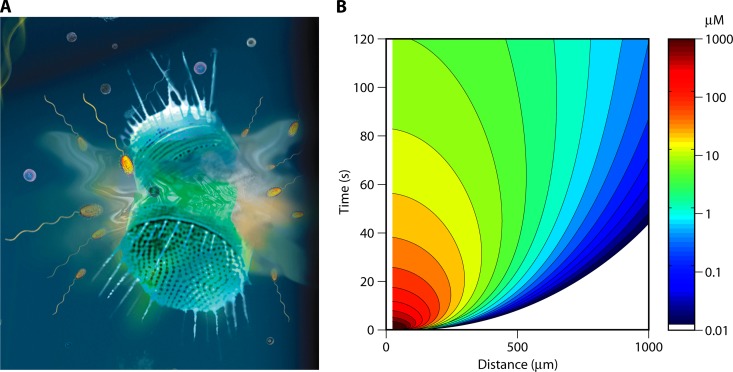Fig 3.
Ephemeral nutrient pulses. (A) Artist's view of the lysis of a phytoplankton cell, resulting in a strong yet ephemeral pulse of dissolved organic matter, to which marine bacteria can respond by chemotaxis if sufficiently rapid. Magnified from Fig. 1B. (B) The DOM concentration field associated with a lysis event, computed by a mathematical model of diffusion from a pulse source, following what was done by Seymour et al. (175). The abscissa shows the distance from the center of the lysing cell, and the ordinate shows the time after the lysis event. Colors indicate the concentration in μM. This computation applies to a cell with a 25-μm radius, an internal concentration of 100 mM, and a diffusion coefficient of the solute of 7.2 × 10−10 m2/s. These parameters are appropriate, for example, for a medium-size, DMSP-producing phytoplankton.

